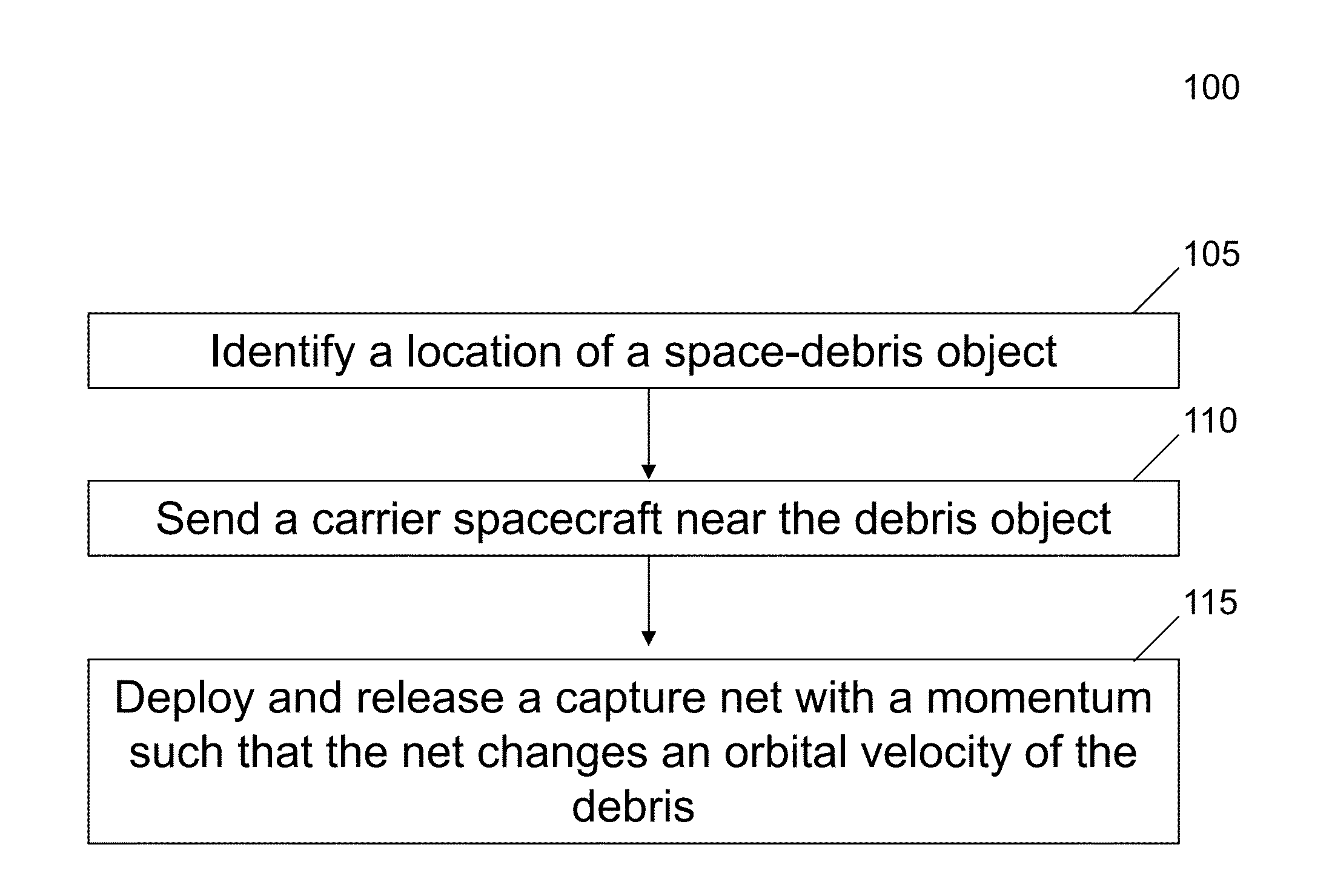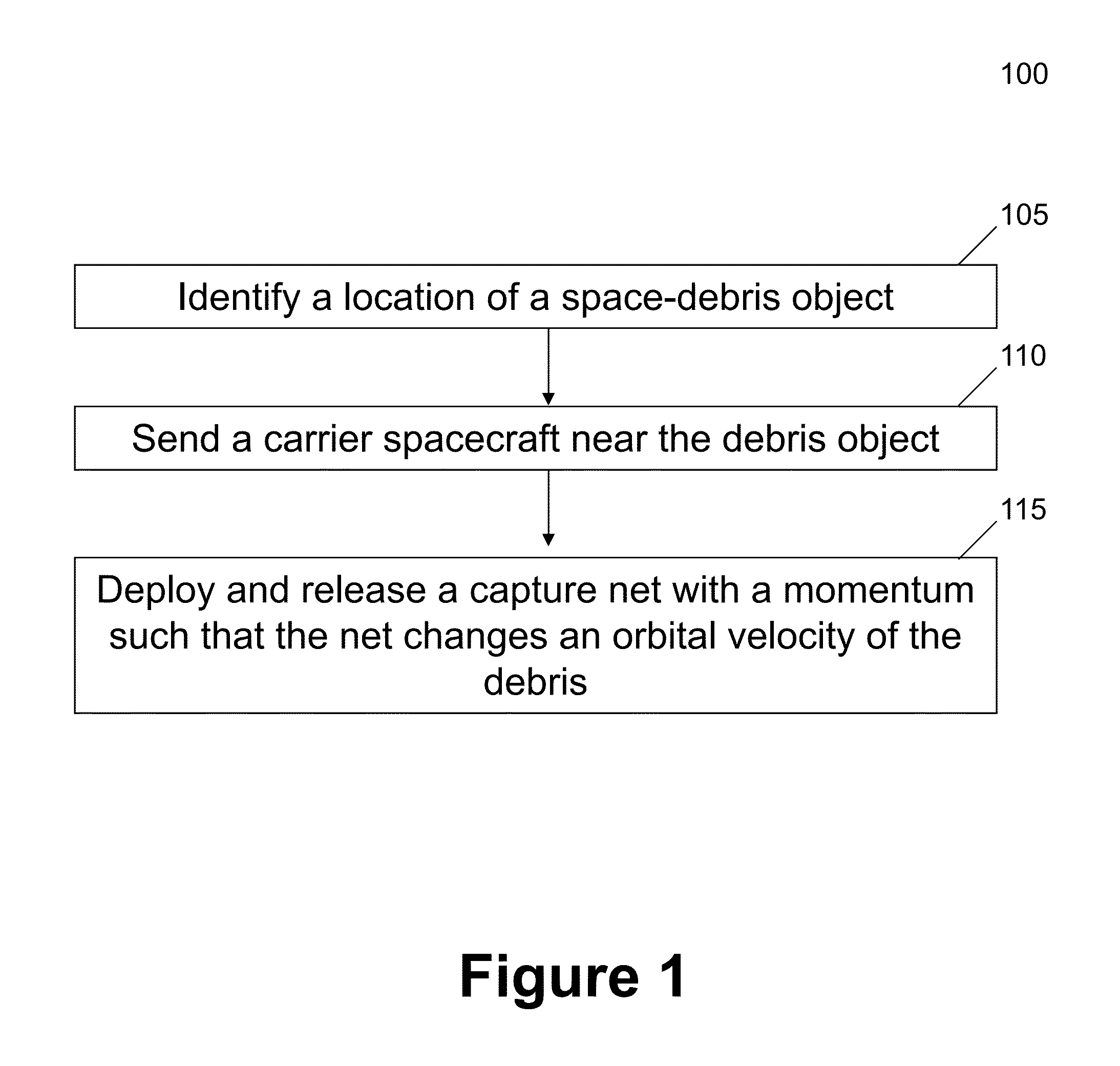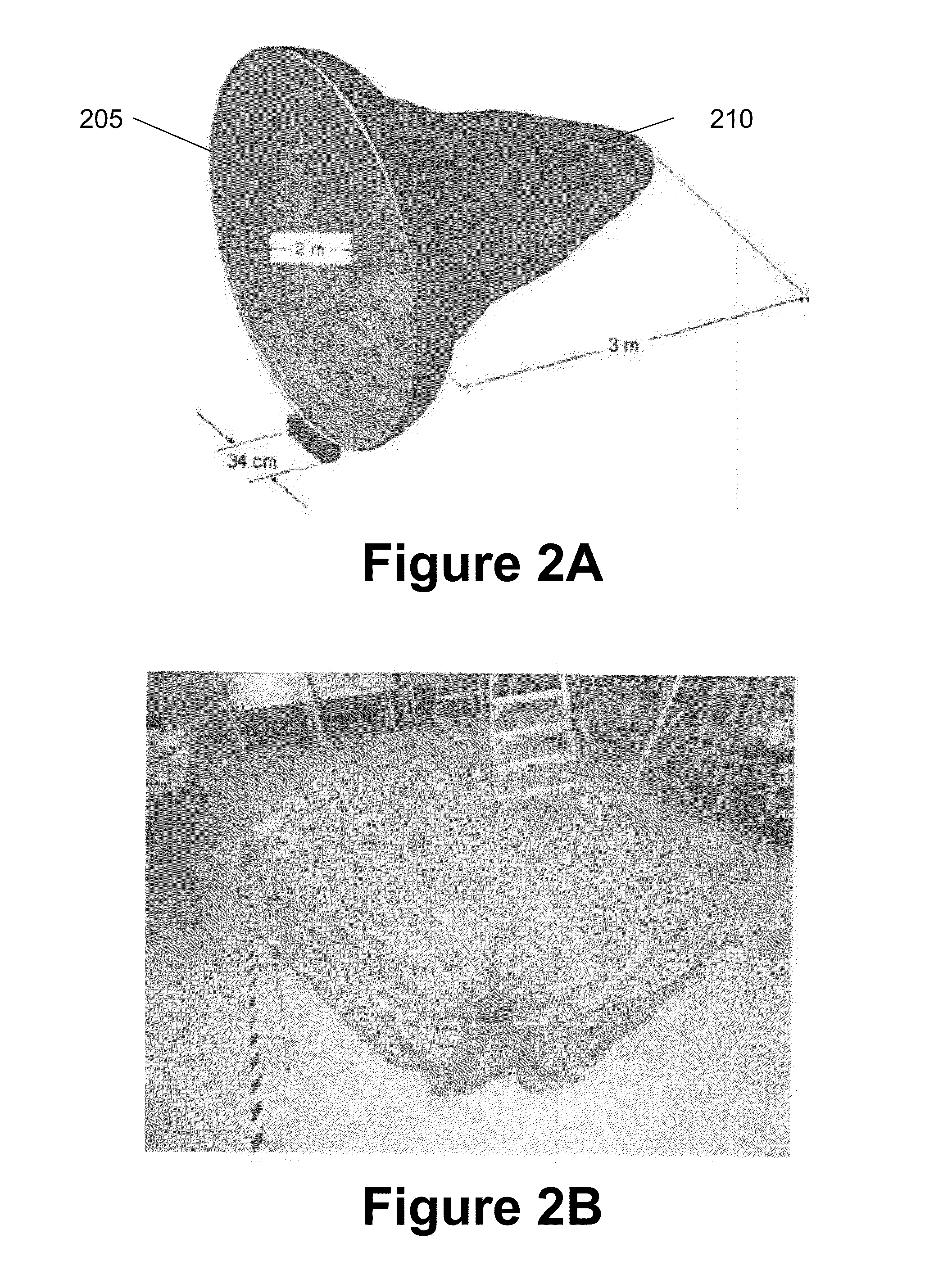Method for removing orbital objects from orbit using a capture net for momentum transfer
a technology of orbital objects and capture nets, which is applied in the direction of process and machine control, instruments, navigation instruments, etc., can solve the problems of space debris, operator may lose control of the entire object, and space debris may remain in orbit for an apparently indefinite period of time, so as to increase the drag and increase the drag
- Summary
- Abstract
- Description
- Claims
- Application Information
AI Technical Summary
Benefits of technology
Problems solved by technology
Method used
Image
Examples
Embodiment Construction
[0013]In some embodiments of the invention, methods and devices are provided that perturb a trajectory of a space-orbital object. For example, a spacecraft may be sent to a location near a space-orbital object orbiting the Earth. A net may be released from the spacecraft in a manner (e.g., with a given alignment, direction and velocity) that results in the net contacting and / or entangling with the object. This contact or entanglement may alter a velocity of the space-orbital object and thereby may alter its orbital path. In some instances, the net's velocity is sufficient to cause the space-orbital object to experience increase drag by the Earth's atmosphere, relative to the drag it would have otherwise experienced if the net did not contact the object.
[0014]FIG. 1 shows an exemplary method 100 for altering a path of a space-orbital object. The space-orbital object may include any object in space. In some instances, the object includes an uncontrolled object in space, in that no per...
PUM
 Login to View More
Login to View More Abstract
Description
Claims
Application Information
 Login to View More
Login to View More - R&D
- Intellectual Property
- Life Sciences
- Materials
- Tech Scout
- Unparalleled Data Quality
- Higher Quality Content
- 60% Fewer Hallucinations
Browse by: Latest US Patents, China's latest patents, Technical Efficacy Thesaurus, Application Domain, Technology Topic, Popular Technical Reports.
© 2025 PatSnap. All rights reserved.Legal|Privacy policy|Modern Slavery Act Transparency Statement|Sitemap|About US| Contact US: help@patsnap.com



